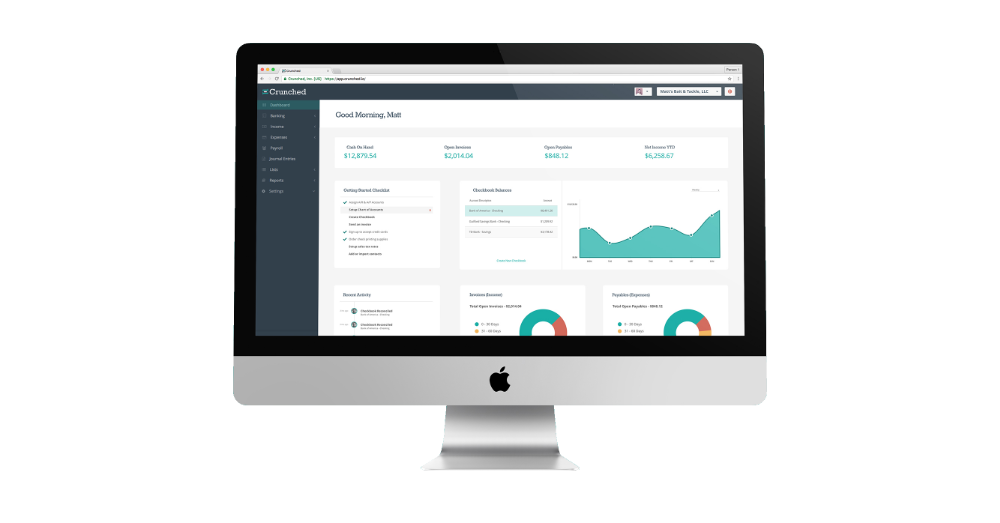6 Tips On How To Manage Accounts Receivable
By Matt Reims
Accounts receivable is the term used to describe the money owed to you by your customers. Managing the accounts receivable process is critical for maintaining positive cash flow that will allow you to expand your business, pay your staff, vendors and creditors, and purchase company supplies. They are also important when you’re looking to accurately calculate your profitability and business income.
Getting paid on time is the best way to keep cash flow moving in the right direction. Immediate payments of your invoices would be ideal, but typically, small business invoices have net 30 terms and even up to net 90 terms. This means that you provide 30-90 days for the invoice to be paid. You’re basically giving your customers a short-term loan, also known as accounts receivable. That’s O.K., but it’s important to get paid on time, if not earlier, so your small business’s cash flow isn’t stalled.
As your business grows, so will your accounts receivable, most likely. This means you’ll need to keep an eye on your receivables frequently — even often as once a week.
The following tips will help you successfully manage your small business’s accounts receivable process.
1. Make it a priority
As a small business owner, it can be easy to get wrapped up in the work at hand and growing your company, but the billing portion of the job is just as important. Send an invoice as soon as the work is finished. It’ll be one less thing for you to have to worry about, and your clients are more likely to pay the invoice sooner because the work you’ve done will still be on their mind.
2. Stay organized
Don’t let an invoice go missing or unpaid because you don’t have your books in order. Your small business accounts receivable process will be more effective if you have detailed reports handy. An accounts receivable aging report will keep track of your customers’ payment statuses and how much money they owe your company. You can learn more about accounts receivable aging here. Keeping strong records will help you stay organized and manage the process more accurately.
3. Be proactive about getting invoices paid
You can ensure invoices are paid promptly, or at least on time, if you make the process easy on your customers. This means delivering an accurate invoice that isn’t missing any information. The last thing you want is a delayed payment because your clients’ accounting department needs to take a closer look at your invoice.
Don’t hesitate to reach out to your clients’ accounting department a few days before an invoice is due to make sure payment is in progress and scheduled to be delivered in time.
4. Be willing to work with past-due clients
You want to be paid for your services, whatever it takes. So if a client is having cash flow problems of their own, offer to work with them. You can come up with a payment plan that works for both parties — just make sure any agreement you come to is in writing and signed by you and the client.
If the client wants to hire you to do more work during the payment plan, ask for immediate payments until the past due amount is paid in full.
5. Offer your clients as many payment options as possible
If you’re just getting started with your business, you may only be set up to accept payments by check. That’s O.K., but as you establish more efficient systems, consider giving your clients more ways to pay you, such as by credit or debit card, direct deposit, PayPal, etc. When you let customers pay you with their preferred method, it increases the likelihood that they’ll be able to pay on time. Plus, it makes the process more convenient for your client — which, hopefully, they’ll remember when they’re looking to hire someone in your field next time.
6. Use technology to manage your accounts receivable
All of these tips — prioritizing invoices, staying organized, offering multiple payment options, etc. — will lead to your business’s accounts receivable being more effective and efficient. These steps will be even easier if you use software to complete them.
Cloud accounting software can automate a large portion of the accounts receivable process, making it easier to manage with more accuracy. You can use cloud accounting software to set up customer profiles that include their accepted payment methods, send invoices, set invoice reminders, accept online payments, and more.
Accounts receivable is a crucial part of your business, but it doesn’t have to be the most difficult. If you aren’t already using cloud-based accounting software to manage your business’s finances, it’s worth looking into.
Cash is king in the small business world. Make sure you’re doing all that you can to collect all of it that is due to you. That includes keeping up with your invoices, sending friendly reminders for past-due payments and, of course, making this entire process easier by using cloud-based accounting software. Your company’s checkbook will thank you.


